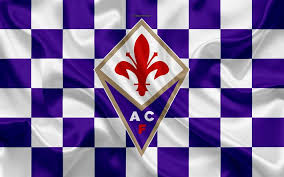The Fiorentina Football Club, a storied institution in the world of soccer, has captured the hearts of fans not only in Italy but around the globe. Known for its rich history, iconic purple jerseys, and passionate supporters, Fiorentina has found itself in the limelight during various periods of success. This blog post will take you on a journey through the club’s glory years, examining key moments that defined its legacy, influential players, management strategies, and the socio-cultural impact it has had in Florence and beyond.
The Birth and Early Days of Fiorentina Football Club
Fiorentina Football Club was established in 1926, emerging from the combination of two local teams—Club Sportivo Firenze and the Florentine Football Club. The new entity adopted the colors purple (viola), which quickly became synonymous with the team’s identity https://kuwin.download/.
Historical Context
The initial years for Fiorentina were marked by competitive spirit and the aspiration to rise within Italian football. During the late 1920s and early 1930s, Italy was solidifying its reputation as a soccer powerhouse. Fiorentina’s formation was emblematic of the city’s desire to be a part of this burgeoning football culture.
The club’s first significant achievement came in 1931 when they won their maiden Coppa Italia trophy. This was not merely a victory; it was an announcement. Fiorentina was here to compete and create a legacy.
Key Players of the Early Era
In the early days, Fiorentina saw the emergence of several key players who would etch their names into the annals of the club’s history. One such player was Fulvio Bernardini, a talented midfielder who played a crucial role in establishing the team’s structure and style of play.
His vision and creativity on the pitch set the tone for future generations. Alongside him, legends like Aldo Olivieri brought skill and tenacity, helping lay the groundwork for what would become a formidable squad.
Challenges Faced
Despite the early successes, the road was not without obstacles. Financial instability plagued many clubs during this time, and Fiorentina was no exception. The economic pressures of the era led to fluctuating performances on the field, and the club struggled to maintain consistency.
The threat of relegation loomed large, and the club faced tough decisions about player transfers and management. Nevertheless, the resilience shown during these formative years would serve as a springboard for future glory.
The Golden Age: 1950s to 1960s
The 1950s and 1960s are often regarded as the golden age for the Fiorentina Football Club. During this period, the team enjoyed unprecedented success, culminating in remarkable domestic and European achievements.
The Triumph of 1956
One of the crowning moments of this era was the club’s first Scudetto win in 1956. Under the guidance of coach Bruno Pesaola, Fiorentina forged a team that combined tactical discipline with flair.
This championship triumph was seen as a culmination of years of hard work, providing both players and supporters with immense pride.
The joy felt in Florence reverberated throughout Italy, symbolizing a collective achievement that united the city in celebration. The iconic image of players parading the trophy through the streets became etched in the memories of fans.
Star Players and Their Impact
The late 1950s saw the arrival of legendary players like Giancarlo Antognoni and Kurt Hamrin. Antognoni, a gifted playmaker, embodied the elegance and technical prowess associated with the Fiorentina Football Club. His ability to orchestrate play and dictate the tempo made him indispensable.
Hamrin, on the other hand, offered speed and goal-scoring ability. Together, they formed a partnership that terrorized defenses across Italy. Their chemistry on the field was palpable, leading to an exciting brand of football that captivated audiences.
